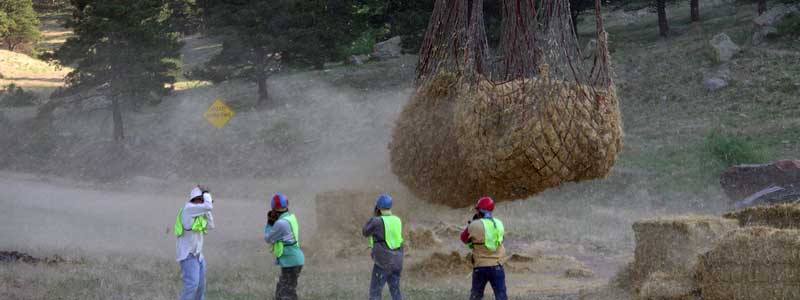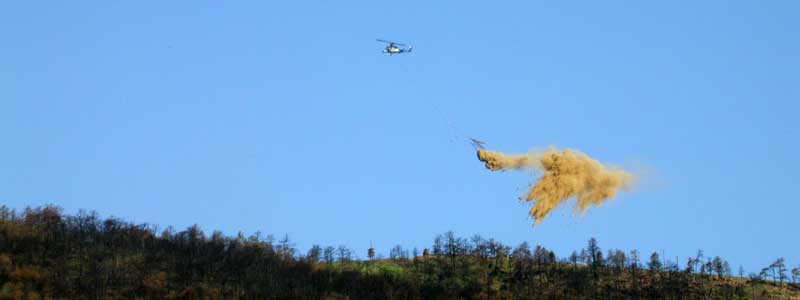Hillslope Stabilization Treatments
The objective in using hillslope stabilization treatments is to quickly establish ground cover that protects soil from raindrop splash, binds soil particles, increases infiltration and slows surface runoff.



How Hillslope Stabilization Treatments Work
Hillslope stabilization treatments are designed to stop or slow post-fire flooding and sediment movement. The objective in using these treatments is to quickly establish ground cover that protects soil from raindrop splash, binds soil particles, increases infiltration and slows surface runoff.
Seeding
The most common hillslope stabilization treatment involves aerial seeding of annual grasses. This activity has shown limited effectiveness, but remains the only method available to treat large areas in a short period of time and at a reasonably low cost per acre. Hand seeding is often used for smaller, more sensitive areas. In both cases, care must be taken to reduce the risk of introducing noxious weeds.
Mulching
Mulching has proven the most effective way to provide immediate ground cover to sensitive areas, but it also is relatively expensive and difficult to install. Following the 2002 fires, rehabilitation crews often applied a mixture of water, wood fiber mulch, seed and sometimes fertilizer known as hydromulch. This treatment provides protective benefits during the first year, even if seeds don’t germinate.

